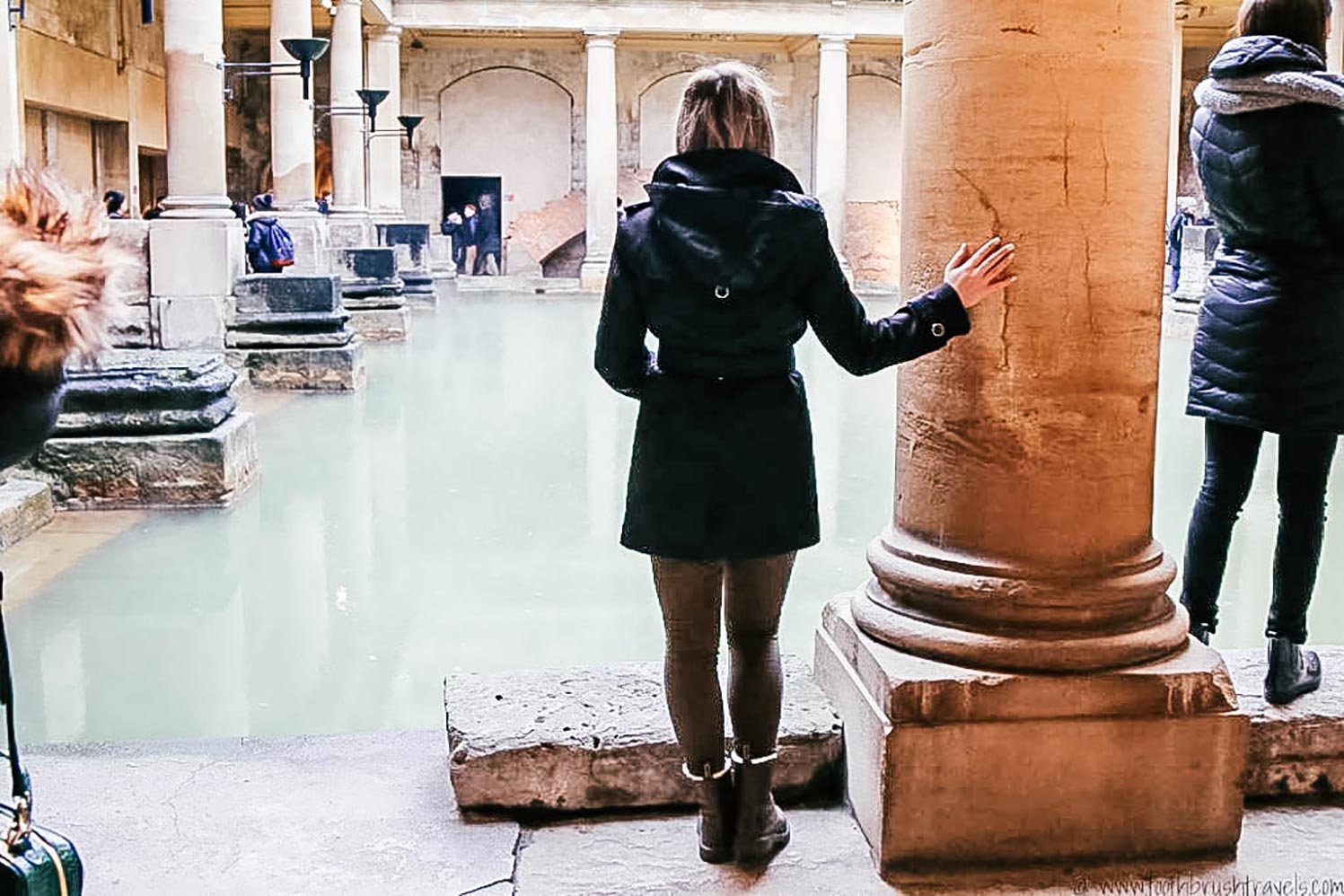Visiting the Ancient Roman Baths in Bath was something I’d wanted to do since I first saw them on a brochure back when I was a child. I’d daydream about diving in them to swim and pretend I was somebody important from the past. So when I discovered that you weren’t actually allowed to bathe in those ancient Roman baths during a tour, my dreams were dashed.

I still wanted to take a look around though because I love an exploration, so when Lauren and I were in Bath on a weekend away we booked tickets.
I could have seen the ancient Roman baths when I visited Bath back in 2016 but one look at the queue which had folded on itself more than a few times meant that it was a solid “nope” from me.
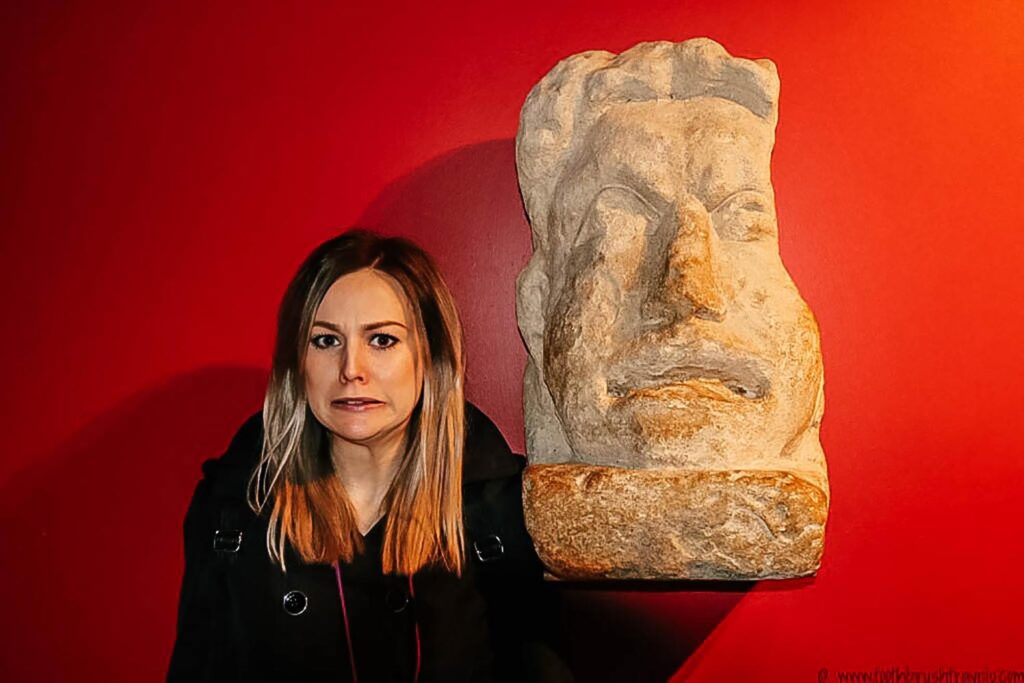
Luckily this time it was a grey, rainy day and there was barely a queue, which was surprising as considering the Roman Baths attract over a million visitors a year, I didn’t think we’d get so lucky.
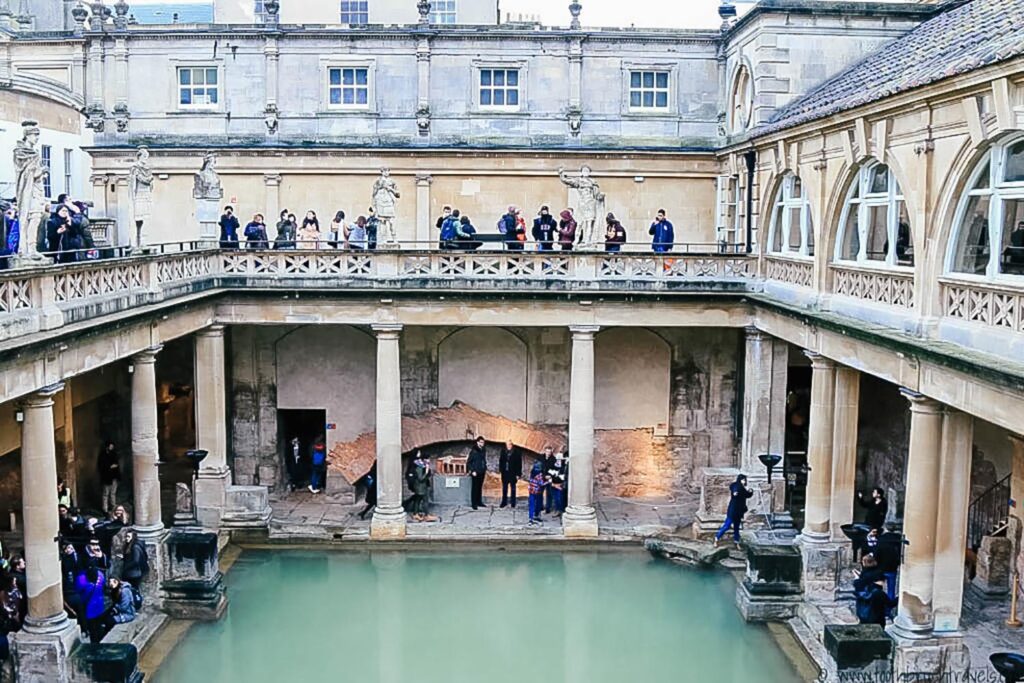
Upon walking into the building I was immediately struck by the ceiling – the entrance is an 1897 concert hall so the ceiling is sorta kinda beautiful.
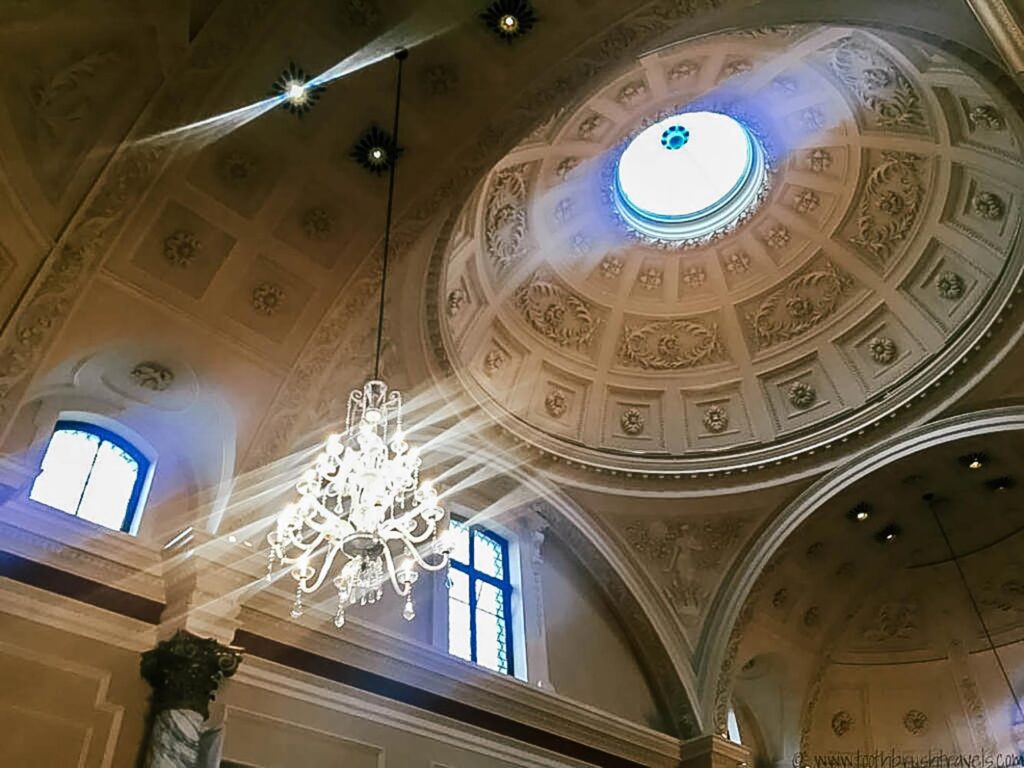
In 2011 the Roman Baths underwent the first phase of an on-going project, when it underwent a £5.5 million redevelopment project designed to bring modern interpretation to the site and preserve its history over the next 100 years.

I didn’t see what it was like before so I can’t compare but all I know is that the ancient Roman Baths, still look pretty ancient, although I imagine they’re now a lot cleaner.
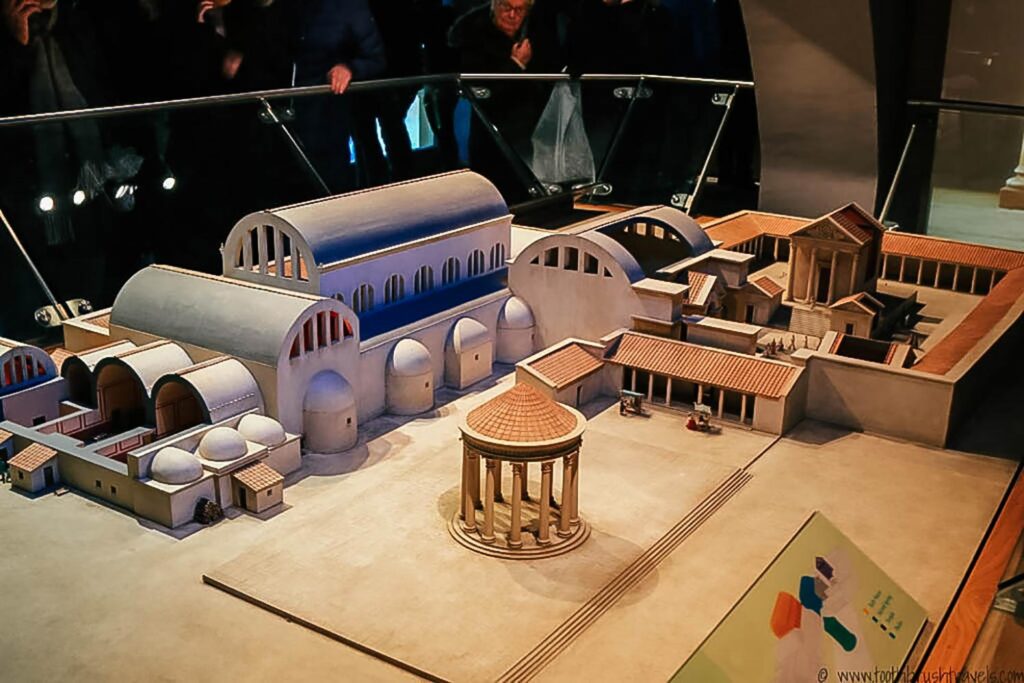
As you go through the entrance you walk onto the outside edge which surrounds the bath. The ancient Roman baths themselves are actually below modern-day street level, and I was pleased to see that there are a variety of ramps and lifts inside to make the baths accessible to those who require mobility assistance.
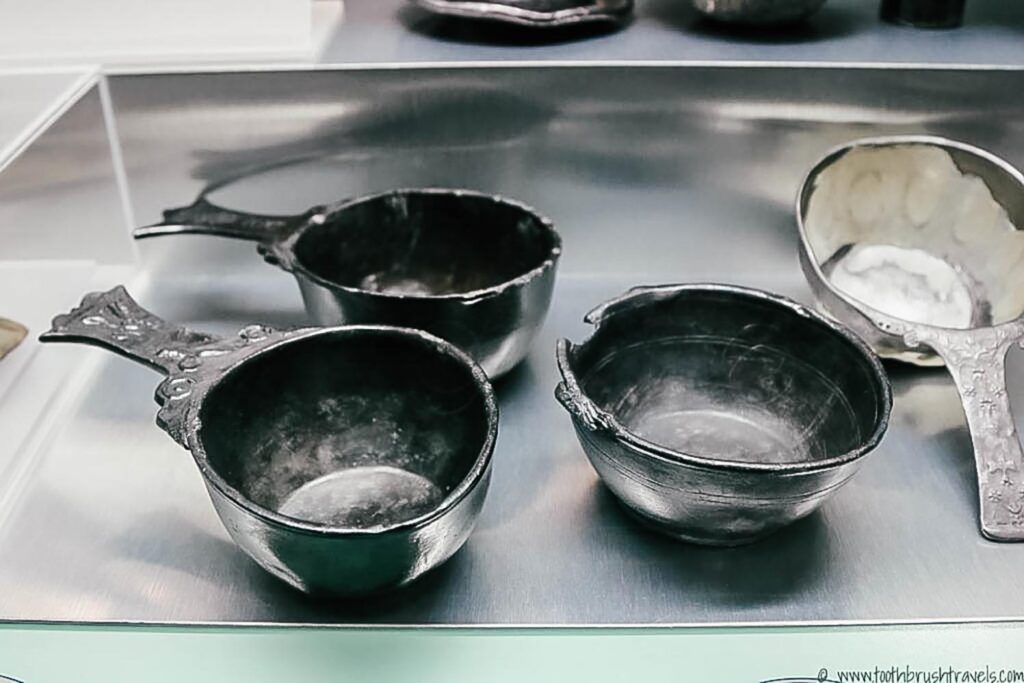
The buildings above street level date from the 19th century and on the traditional Roman street level the site of the Roman baths houses four separate places; the Sacred Spring, the Roman Temple, the Roman Bath House and the Museum which holds an abundance of findings from the Roman Bath.

As you walk around each element of the ancient Roman Baths you’ll be prompted by a number written on the wall which will correspond with the audio guide you were given when you walked in. The audio guide is available in 12 languages and provides useful facts and tidbits of information about the ancient Roman Baths and the artefacts in the museum (You can book tickets, here).

As I was walking around the baths snapping away like the shutterbug I am, the following thought crossed my mind;
How Do The Ancient Roman Baths Remain At Such A Temperature
I mean, you’ll see from the steam rising from the water’s surface, that the water in the Roman Baths is hot. But in order for it to get to the point where it bubbles into the bath, it must first take a journey.

The journey begins when it rains upon the Mendip hills nearby. The rain water gradually filters through limestone aquifers to a depth between 2,700 and 4,300 metres where geothermal energy increases the temperature of the water to fricking hot. Obviously that’s not a technical unit of measurement.
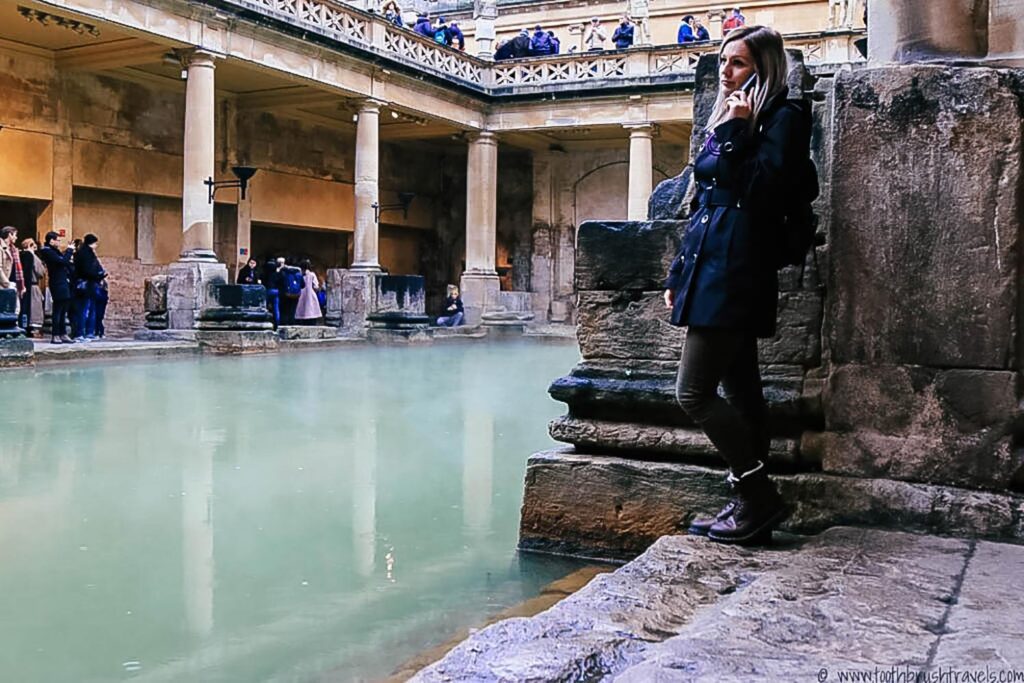
An accurate unit of measurement would be between 69°C – 96°C. But ya’know, considering the average bath temperature is below 40°C, heckin hot is accurate. Due to the age of the pipes bathing in the ancient Roman baths is now banned and whilst water was originally banned too, a new spa water bore-hole was sunk in 1983 which provides clean, safe drinkable spa water which can be drunk in the pump room.
How The Ancient Roman Baths Were Built
The baths, or bathing complex as it was formerly known, was built up over the duration of 300 years. The temple was constructed first somewhere around 60/70 AD and the baths came just after that. During the Roman occupation of Britain engineers used drove oak piles into the mud around the spring to form a stable foundation.

This foundation was then reinforced by using an irregular stone chamber lined with lead before being enclosed with a wooden barrel-vaulted building in the 2nd century. This building included the caldarium (hot bath), tepidarium (lukewarm bath), and frigidarium (cold bath) – so yano. There was a bath for every preference. Unfortunately it didn’t last long, as in the 5th century these fell into disrepair and due to silt and flooding it’s believed that the original Roman Baths were lost in the 6th century.
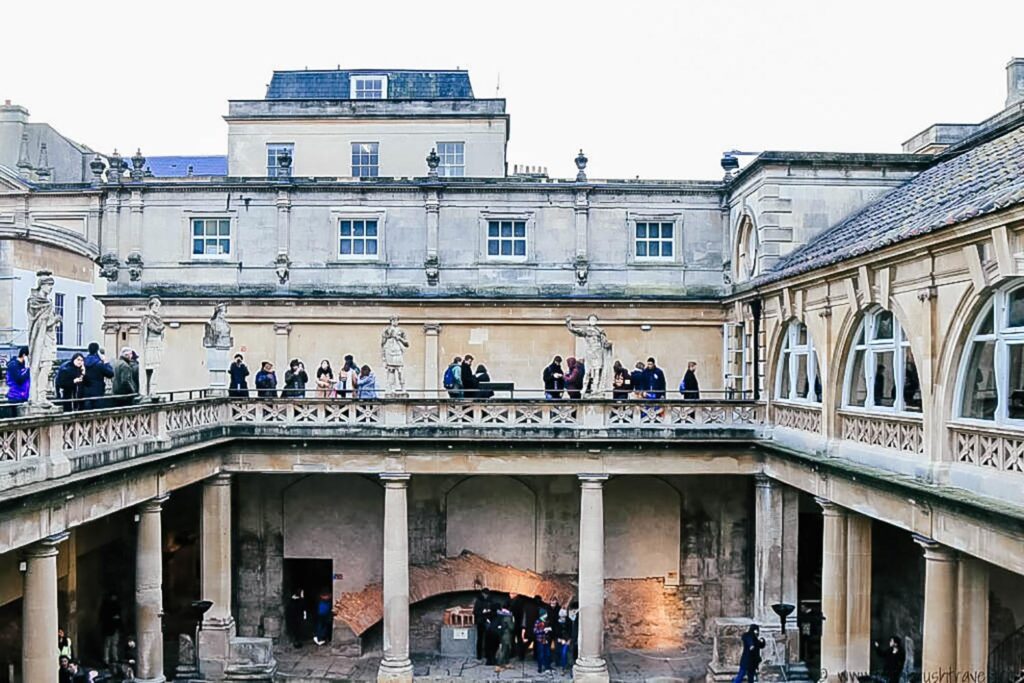
Fun fact: People in the roman times were just as childish as nowadays as many reported that whilst using the baths their clothes were taken. They believed it was a curse but having been young and immature once; I think we can all agree that it wasn’t a curse but was the handy work of the village prankster.
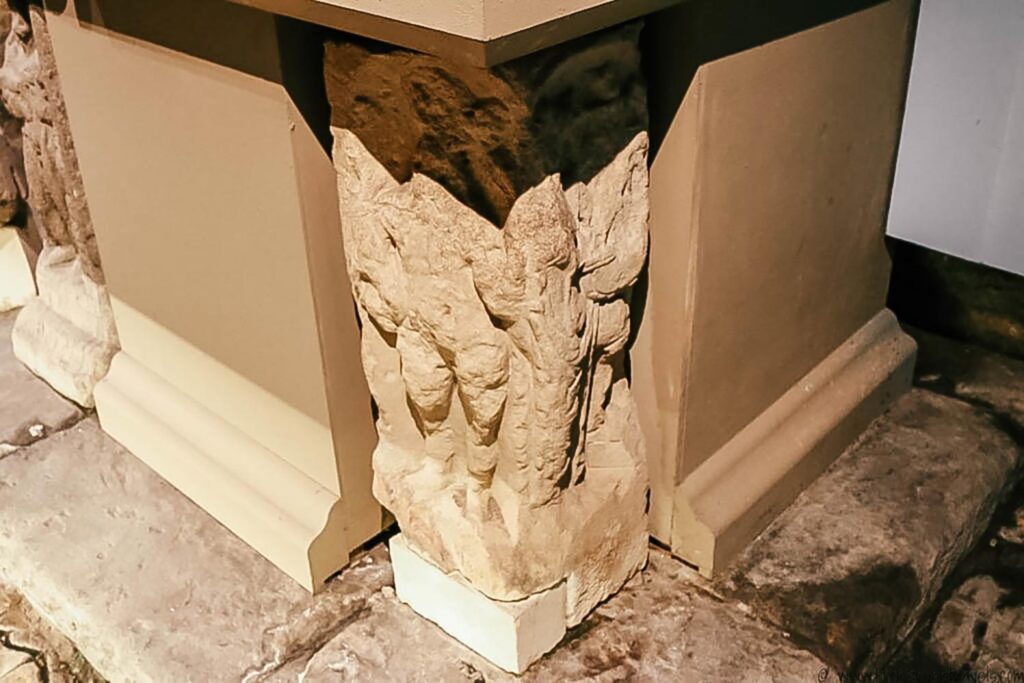
Since the original collapse in the 6th century the ancient Roman baths have been modified on several occasions, including during the 12th century when a curative bath was built over the King’s spring reservoir and in the 16th century when the Queen’s bath was built to the south of the spring. There were a few more times after this but in 1810 the hot springs failed. It wasn’t until William Smith (William, not Will) opened up the bottom of the spring at he realised the spring was flowing via a new channel, so after redirecting the flow of water the baths were once again filled.
Probably just as well really.
Is there anything that beats a nice bath after a long day?

I could have done with a nice hot bath after all the learning, but ya’know, the ancient Roman baths were out of bounds considering it’s basically a mineral rich pigeon toilet which also carries an array of infectious diseases. So that had to wait until the next day when we visited the Thermal Bath Spa!
